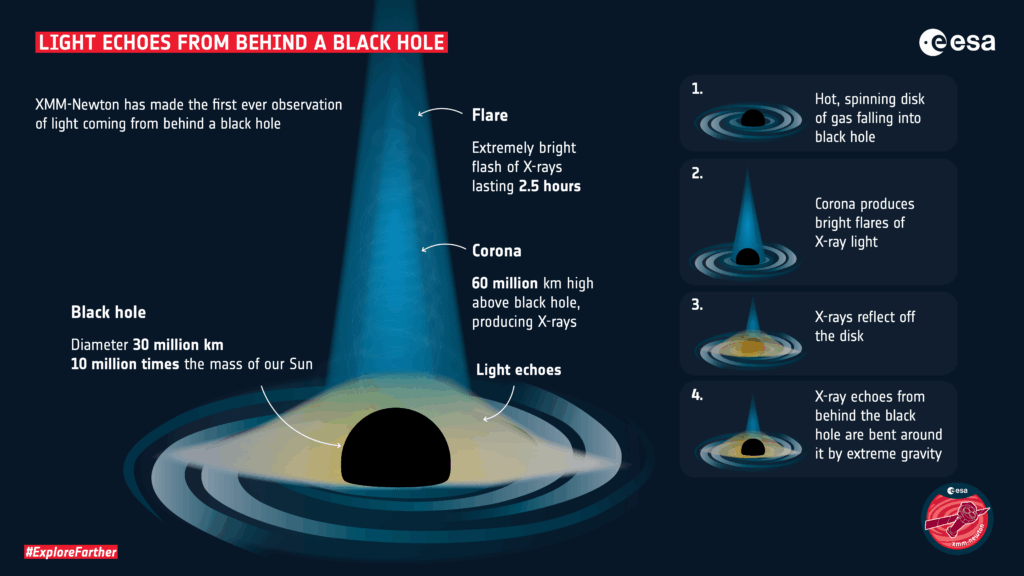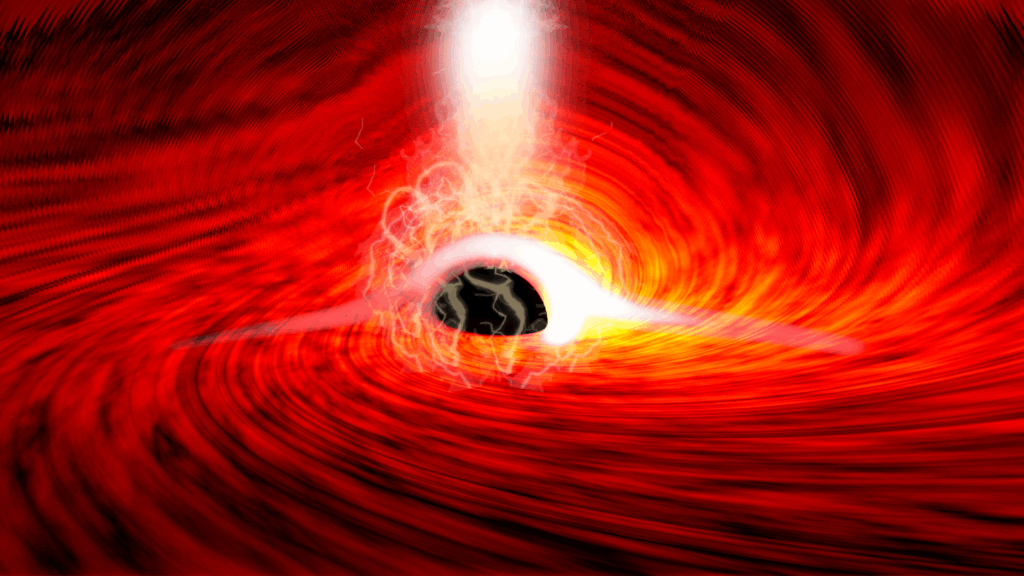An international team of astronomers, including Elisa Costantini (SRON), has for the first time observed light from the far side of a black hole. Initially this light, in the form of X-rays, is emitted by a corona surrounding the black hole. A series of strong X-ray flashes from the front was followed by a series of weaker flashes, which the researchers determined are from the back side and reflected off the black hole’s accretion disk. Publication in Nature.
Watching X-rays flung out into the Universe by the supermassive black hole at the center of a galaxy 800 million light-years away, the research team noticed an intriguing pattern. They observed a series of bright flares of X-rays – exciting, but not unprecedented – and then, the telescopes recorded something unexpected: additional flashes of X-rays that were smaller, later and of different wavelength than the bright flares.
corona
The original motivation behind the research was to learn more about a mysterious feature of many black holes, called a corona. Material falling into a supermassive black hole powers the brightest continuous sources of light in the Universe, and as it does so, forms a corona around the black hole. This light – which is X-ray light – can be analyzed to map and characterize a black hole.
The leading theory for what a corona is starts with gas sliding into the black hole where it superheats to millions of degrees. At that temperature, electrons separate from atoms, creating a magnetized plasma. Caught up in the powerful spin of the black hole, the magnetic field arcs so high above the black hole, and twirls about itself so much, that it eventually breaks altogether – a situation so reminiscent of what happens around our own Sun that it borrowed the name “corona”.

galaxy I Zwicky 1
For this project, the researchers trained two space-based X-ray telescopes, NASA’s NuSTAR and the European Space Agency’s XMM-Newton, on the galaxy known as I Zwicky 1. They detected a series of X-ray flares, and while taking a closer look to investigate their origin, they saw the series of smaller flashes. These, the researchers determined, are the same X-ray flares but reflected from the back of the black hole’s accretion disk—a first glimpse at the far side of a black hole.
‘Although we are used to accretion disks flaring quite often and with an erratic behavior, this was the first time that some of those flashes could be effectively used to trace the far side of the black hole system,’ says Costantini. ‘This may open a new window on accretion disks studies.’
The future Athena X-ray telescope, to be launched in 2031 and with significant contributions from SRON, offers the possibility to study coronas around black holes in even more detail.
This study was led by Stanford University. Co-authors of this research are from Saint Mary’s University, SRON Netherlands Institute for Space Research, University of Amsterdam and The Pennsylvania State University.
Publication
Wilkins D., Gallo L., Costantini E., Brandt W., Blandford R., ‘Light Bending and X-ray Echoes from Behind a Supermassive Black Hole‘, Nature



